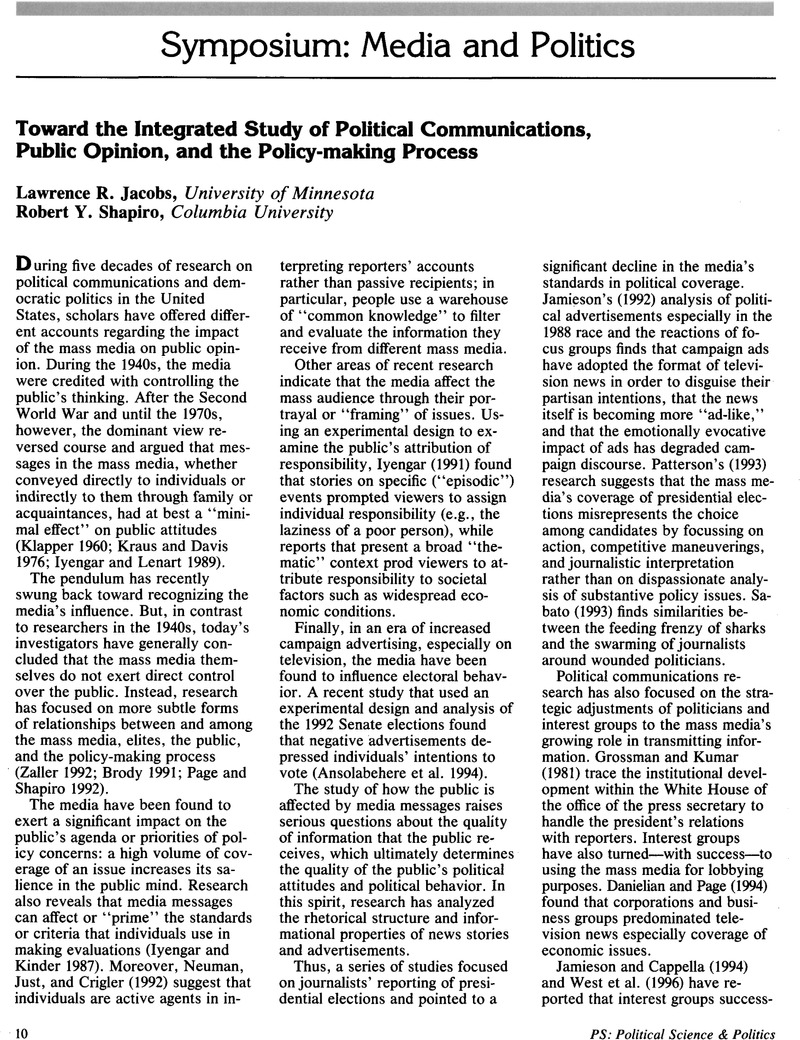Crossref Citations
This article has been cited by the following publications. This list is generated based on data provided by Crossref.
Dörner, Christine
1998.
Politische Meinungsbildung und Wahlverhalten.
Vol. 84,
Issue. ,
p.
119.
Taylor, Savitri
2002.
Reconciling Australia's International Protection Obligations with the 'War on Terrorism'.
Pacifica Review: Peace, Security & Global Change,
Vol. 14,
Issue. 2,
p.
121.
DE VREESE, CLAES H.
and
KANDYLA, ANNA
2009.
News Framing and Public Support for a Common Foreign and Security Policy*.
JCMS: Journal of Common Market Studies,
Vol. 47,
Issue. 3,
p.
453.
Wlezien, Christopher
and
Soroka, Stuart N.
2009.
The Oxford Handbook of Political Behavior.
p.
799.
Contandriopoulos, Damien
and
Bilodeau, Henriette
2009.
The political use of poll results about public support for a privatized healthcare system in Canada.
Health Policy,
Vol. 90,
Issue. 1,
p.
104.
Crow, Deserai
and
Wolton, Laura
2020.
Talking Policy in Congressional Campaigns: Construction of Policy Narratives in Electoral Politics.
Politics & Policy,
Vol. 48,
Issue. 4,
p.
658.



